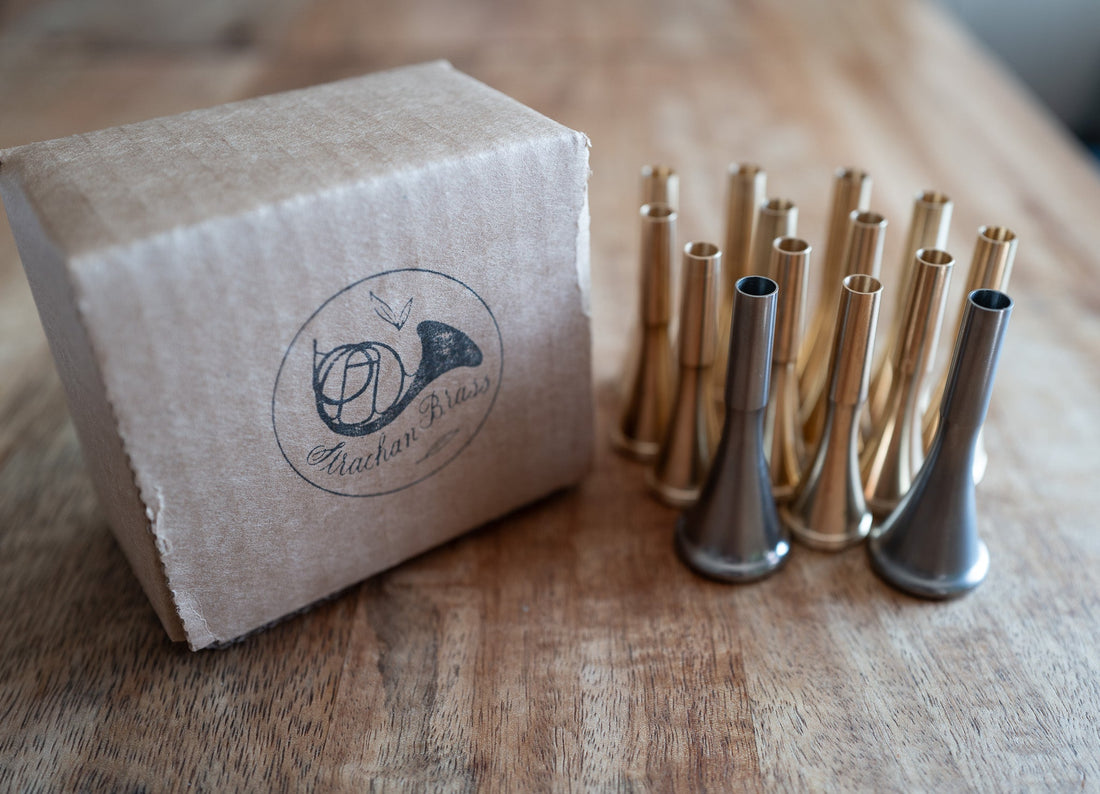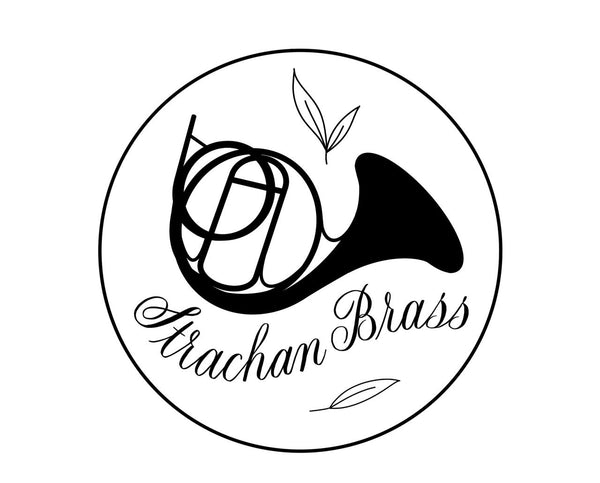FAQs and how to choose
Share
"Can I try it" / "What's the return policy"?
Absolutely. We have 30 day returns on all standard models and sizes. No two horns, even the same model, are the same and there's no substitute for trying it out. Send it back if it isn't right (though do shoot us an email first so we know to expect it!)
We offer full custom services, including duplication, other threading standards & full custom designs. We encourage you to try stuff off-the-shelf first because it helps us anchor designs in something we know. Something like "I want it to be more open or have a darker/brighter sound" from a known foundation helps us enormously.
"I'm a low / high player and your models names / types don't give me much guidance on which is best for me?"
We really spent a lot of the R&D time on making sure all the models work in all the ranges. Every design needs to open up in the low register to let you develop a big, resonant sound. And up top they need to give you a little bit of resistance and brighten up to keep everything efficient. None of our models go into production without these characteristics.
Where they differ though; low players often valuable more flexible slotting and have different sound preferences. In general our deeper, more open cups (GH, GC, GS) tend to give more flexibility where the shallower cups (GD, MD, G) tend to slot a little harder. The CV, GM, LA, and M aim for a "middle of the road" slot width suitable for most playing.
"Do I want a deep or shallow cup?"
If you want a bright, clear sound and narrower, more accurate slots you want one of the shallower cups (GD, and MD). These are efficient and project very well. This comes at the expense of some ability to bend and form the pitches - they're "slotty". High horn players tend to prefer this tradeoff.
If you want a darker, rich sound you want a deeper cup (GS, GM, GC). These come with better pitch bending for slurs & the most demanding intonation matching, but they're less "slotty" and don't project as intensely.
The "default" (G, GM, LA, M) cups are designed for balance for typical playing on their respective instruments.
"My horn isn't either a Geyer or a Kruspe, what do I need?"
The whole "Geyer/Kruspe" think is a bit over indexed at the best of times; does a large belled Geyer/Knopf really play differently than a small bell Kruspe? No, not really - it's a continuum and the leadpipe + bell combo is much more impactful than the shape of the tubes. I use this as a shorthand for "large belled" and "small belled" horns - most of the time to balance them a large belled horn is accompanied by a more restrictive leadpipe (think a Conn 8D) which we're calling a "Kruspe" horn. "Geyers" have narrower bells and more open "free blowing" pipes.
We've recently added the new C-series mouthpieces which are designed to work across a wide variety of horn designs; these are a great starting point.
"Ok but that wasn't actually that helpful, tell me which to choose."
Ok first you're going to figure out what shank you have. If it's American you want to choose from the American shank family (G, GM, LA, GS, GH, GD, CV, etc..). If you have an Alex or other "European" shank horn you want the M series (M, MD, CV).
Let's break down the American shank options first; and it's going to start with what feel you want.
If you feel your horn pushes back to you and won't let you play with as big or open an air stream as you want, you want either an LA or the CV.
If you feel the opposite - that your horn wants to be bright and feels open, you probably want to start with want one of the control G-series pieces (G, GM, GS, GD).
If you're not sure, the CV is a great general starting point.
If you're looking to play the Brandenburg on a modern double, you're going to want the GD, that one's easy.
On the Mainz shank we offer the CV, the M and shallower MD. The M and GM are similar and the MD and G are similar if you wanted to compare to the American shank offerings.
We're also here and happy to work with you by email - info@strachan-brass.com.
"For full-custom orders how do the plastic prototypes differ from the brass finished items?"
The plastic prototypes tend to play kinda "dry" - they don't have a lot of ring to the sound and can feel kind of "dead". What we're looking for is that they're in tune, they open up in the low register to support good tone and volume production in the basement, and that they add resistance in the high register to let you play efficiently. We also want to make sure the octaves are even on every valve combination available on the instrument. Once we've gotten all that worked out we would move on to the brass finished piece.
The brass versions have consistently "wow"ed compared to the plastic prototype. When we get to the "the plastic one plays pretty good" stage we're quite confident going into production that the final mouthpiece is going to deliver great results.
"Where / how do you make them?"
This has changed recently! We used to be 100% contract manufacturing with me designing the cups and then using an aerospace-grade machine shop to manufacture them. Now we have in-house manufacturing for some models and all custom orders. This lets us have more flexibility and prototype more quickly.
Rims are generally hand polished in house, so that's still very much me and a dremel spending some quality time putting a mirror-smooth finish on your rims. We strive for accuracy and consistency, but the rims can vary a little bit, especially if you're trying one in a different material than you've tried before.
"What are they made of?"
Cups are made of standard industrial brass.
Our default rim material is Titanium; it's polishes nicely and has outstanding bio-compatibility and few, if any, players are allergic to it. It also has excellent durability and it's also much less heat conductive than brass so you can play in the cold. And, since there are no coatings to wear out, you can play one for your entire career.
We can also offer rims in plated brass or stainless steel. Since brass contains some amount of lead it's unsuitable for rims without coatings; we use Anderson plating for plated rims. Never play on a rim with raw brass showing; we warranty all plating against defects for 2 years. We can also re-plate brass rims (again through our partners at Anderson) that have worn or scratched coatings.
"When will it get to me?"
In-stock items (the default bore of each mouthpiece) generally ship within a day or two and ship from San Francisco via UPS; exceptions will be noted in the product pages. If you order express they get sent 2-day air. Regular shipping is UPS ground. International orders are calculated at checkout and you can choose your carrier. If you have questions just email us and we'll get you a shipping time estimate.
Special orders ship in 3-4 weeks. We can (sometimes) go faster in an emergency since we have the production equipment available, please get in touch if you have special circumstances.

